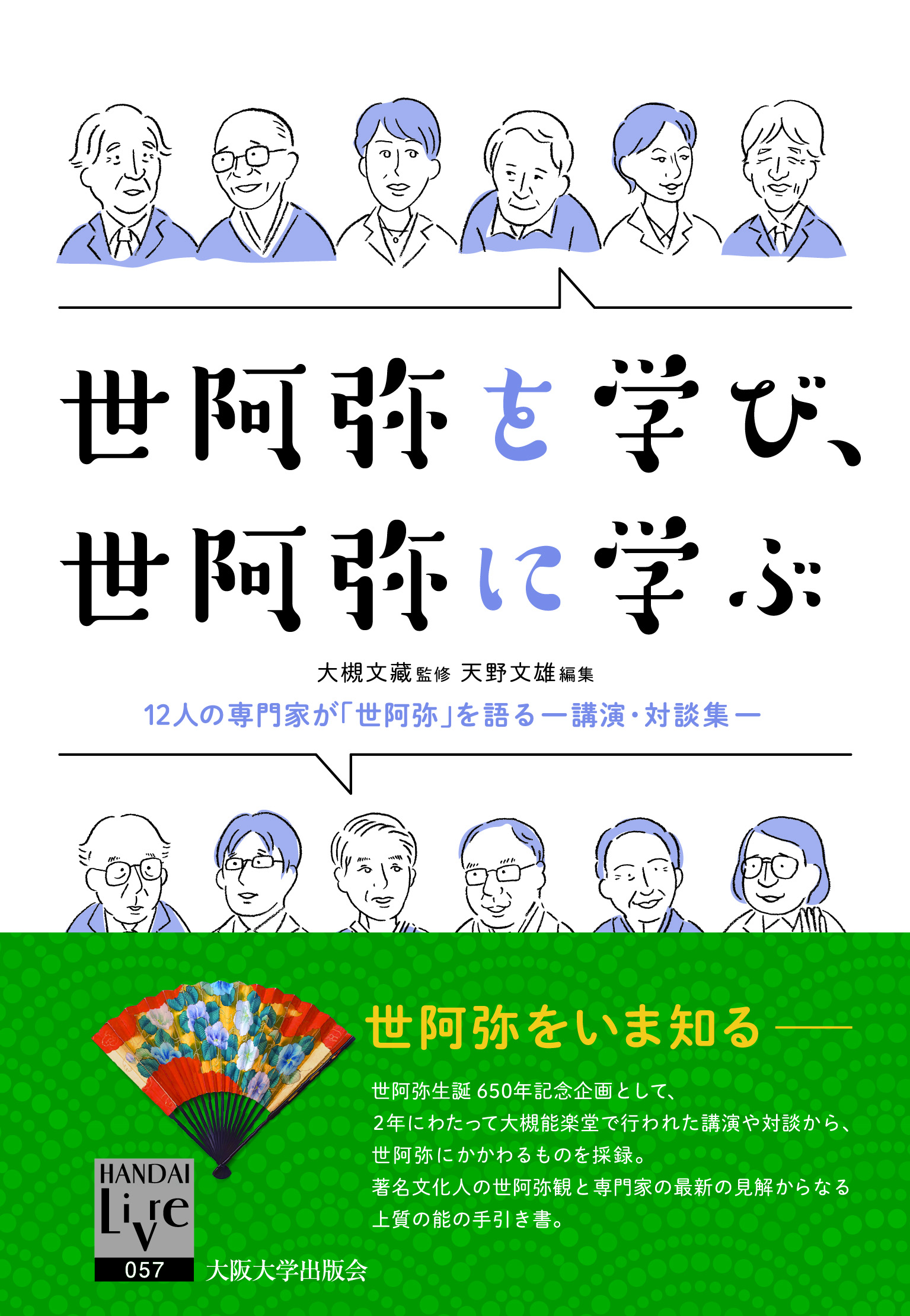
Title
Handai Livre, No. 57 Zeami wo manabi, Zeami ni manabu (Learning about Zeami and Learning from Zeami)
Size
318 pages, softcover
Language
Japanese
Released
July, 2016
ISBN
978-4-87259-439-3
Published by
Osaka University Press
Book Info
See Book Availability at Library
Japanese Page
It is not all that unusual for a young handsome-looking pop idol to also be a gifted young poet. But it would be quite rare anywhere in the world for such a person to go on to achieve greatness as a multitalented person of the theatre, that is, as a first-rate actor, the leader of a troupe, a director, a playwright, and even a theatre critic. This was realized in Japan’s medieval period in the person of Zeami (1363–1443), and it is something in which the Japanese should take greater pride.
In this book, twelve people take up the challenge of bringing their knowledge to bear on this uncommon polyhedron named Zeami. It consists of edited versions of lectures, colloquies, and round-table discussions that were held in conjunction with performances of Zeami’s plays at the Ōtsuki Noh Theatre, presided over by Ōtsuki Bunzō of Osaka.
Suzuki Tadashi (“My Hopes for ‘Noh’”), who questions the raison d’être of Noh today in the midst of an information-oriented society, and Watanabe Moriaki (“Zeami and His Theories”), who uses the mirror of French drama and thought to approach Noh and Zeami, make some radical statements, while Umehara Takeshi (“Zeami and I”), Baba Akiko (“Sanemori: The ‘Martial’ Style of Noh Established by Zeami”), and Yamaori Tetsuo (“Zeami’s Method of Directing Departed Spirits as the Principal Character”) discuss Zeami from their respective standpoints. In addition, with Tanaka Takako, a specialist in medieval Japanese narrative tales, acting as coordinator, Miyamoto Keizō (Yorimasa), Matsuoka Shinpei (Koi no omoni), Watanabe Moriaki (Hanjo), Ōtani Setsuko (Tōru), and Amano Fumio (Izutsu) each give a detailed explanation of one of Zeami’s plays.
In my own contribution (about Koi no omoni), I touch on the principal character of Koi no omoni, who wears the mask of an ogre called Akujō, and proposing the topic of “demons and Zeami,” I discuss how dealing with “demons” was a practice exercise in which the modern period emerged from the ancient and medieval periods, how Zeami struggled with “demons” throughout his life, and how this was handled leading up to the modern period.
Although this book includes some content of a slightly advanced level in the expositions by Noh researchers based on the latest findings, as a whole, being based on “spoken” content, it is easy to understand, and there can be no doubt that it is a perfect introduction to Zeami, who will increasingly become a person of the theatre shared by people around the world.
(Written by Shinpei Matsuoka, Professor, Graduate School of Arts and Sciences / 2018)



 Find a book
Find a book

